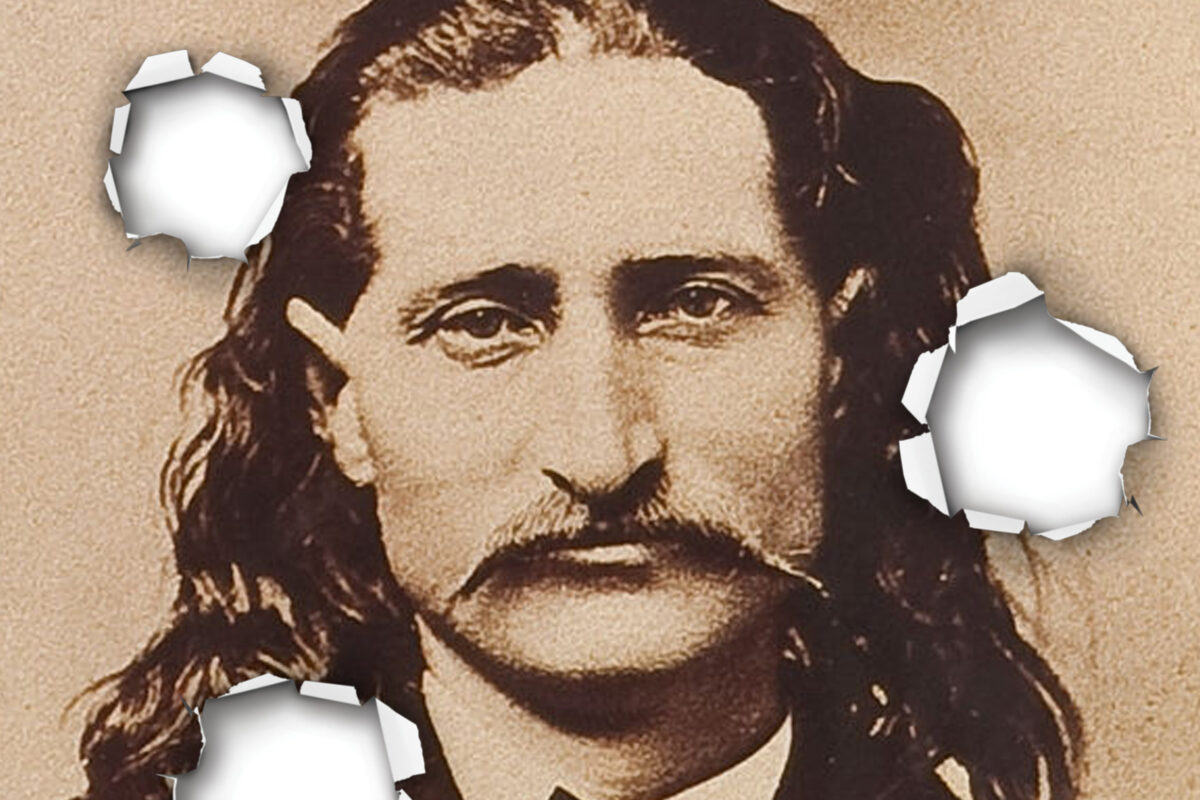Like most fans of the Old West, I have long been intrigued by Wild Bill Hickok (born James Butler Hickok). While the influence of 1950s TV Westerns on my life has been immeasurable, I can safely say that even as a kid I rejected the kiddie-oriented series “The Adventures of Wild Bill Hickok” (1951-58). Guy Madison was tolerable as the do-no-wrong title character, but his 300-pound comic sidekick Jingles (portrayed by Andy “You Were Great in 1939’s ‘Stagecoach’” Devine) was mostly annoying.
I started to take an interest in the real Wild Bill Hickok in the 1960s, even though I was unaware of Joseph G. Rosa’s fine 1964 biography “They Called Him Wild Bill: The Life and Adventures of James Butler Hickok.” What did it instead were assassinations and family poker games. Sometime between the assassination of John F. Kennedy in Dallas on Nov. 22, 1963, and the assassination of Martin Luther King in Memphis on April 4, 1968, an uncle who had spent much of his life in the West told me about Wild Bill Hickok’s assassination in Deadwood on Aug. 2, 1876. And in the late 1960s during a summer penny-ante draw poker game, somebody showed a pair of aces and a pair of eights, causing an aunt (long since dead) to declare it the Dead Man’s Hand. (Allegedly, Hickok held those two pairs when Jack McCall shot him in the back of the head during a poker game.) Oh, and about that same time, I finally saw “Stagecoach,” in which the Dead Man’s Hand turns up near the end—dealt to the main bad guy not long before John Wayne’s Ringo gets the best of him in a gunfight.
Yes, I knew something about Wild Bill’s death, but it wasn’t until the summer of 1976—the centennial of Hickok’s death, the bicentennial of the nation’s birth—that I finally wanted to find out more about his real life. Credit Calamity Jane. Someone I worked with in a New York City newspaper office of all places, being a Doris Day fan, had cause to mention Calamity Jane. Back in 1953, Doris had played a spunky, pistol-packing Calamity Jane in a Western musical of the same name. I made some inquiries after that and came to learn that the real-life Calamity Jane and the real-life Wild Bill Hickok were lovers who had adjoining plots in a Deadwood, South Dakota, cemetery. It took several more years for me to realize I had some false information: The two had actually only been acquaintances and that the burial arrangement was strictly Jane’s idea. I wondered if any woman would ever feel about me the way Jane felt about Wild Bill and whether I would have to wait until I was dead to find that out.
Through the 1980s, I picked up tidbits about Hickok gunfights and late-in-life marriage (yes, he was married when Jane had eyes for him), but my interest wasn’t truly rekindled until the 1990s when I read Rosa’s “Age of the Gunfighter: Men and Weapons on the Frontier, 1840-1900.” I then got a copy of his 1964 classic “They Called Him Wild Bill.” After that tour de force, Rosa kept writing about Hickok—his books “Wild Bill Hickok: The Man and His Myth” and “Wild Bill Hickock, Gunfighter: An Account of Hickok’s Gunfights” come immediately to mind—and I kept referring to them.
It pleased me greatly when Joe Rosa wrote two articles for Wild West Magazine about this fascinating Western frontier icon: “Wild Bill Hickok: Pistoleer, Peace Officer and Folk Hero” (February 2003 issue) and “Hickok’s Last Gunfight” (December 2008). I never met Rosa, who was born and lived in England. But we emailed whenever I needed clarification on such matters as the Dead Man’s Hand and Wild Bill’s relationship with Calamity Jane or whenever I wanted a Hickok photograph for the magazine. He was always helpful and generous right up until his death seven years ago. My historical novel “The Call of McCall,” in which Wild Bill is one of the main characters, came out in July 2022 and is dedicated to “Joseph G. Rosa (1932-2015).”
Thank you, Joe.

